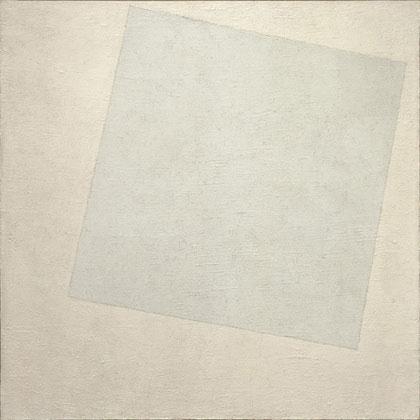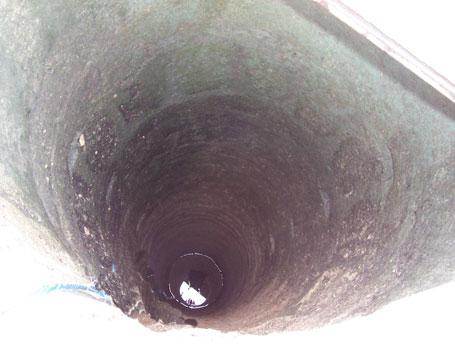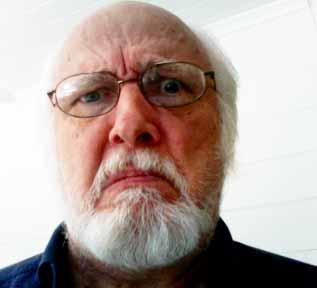 *
*
An ambition of Appiphany, within the context of ubimage for konsult (noun-verb), is to choragraph (verb-noun) the "tenor" dimension of experience (the invisible, extrasensory, spiritual, connotative meaning). Ubimage does for existential wayfinding (you are not where you are, and are where you are not) what GPS does for physical navigation (you are here). This dimension has been fabulated in Arts & Letters (A&L) through the motif of "whiteness" (the blank --blanc, blanche), of which the most famous example in American letters is Melville's "the whiteness of the whale). [Note: Blanchot's signature]
The purpose of Modules is to address the complexity of apparatus heuretics by separating out a number of signifying units, to treat each one in isolation. Useful pedagogically, and also facilitates combinatorial testing. The plan for "Whiteness" is to collect some of the principal citations (examples), including primary and secondary texts and images. An added (site) benefit is to utilize the Forum "comment" feature.
For Once, Then, Something
By Robert Frost
Others taunt me with having knelt at well-curbs
Always wrong to the light, so never seeing
Deeper down in the well than where the water
Gives me back in a shining surface picture
Me myself in the summer heaven godlike
Looking out of a wreath of fern and cloud puffs.
Once, when trying with chin against a well-curb,
I discerned, as I thought, beyond the picture,
Through the picture, a something white, uncertain,
Something more of the depths—and then I lost it.
Water came to rebuke the too clear water.
One drop fell from a fern, and lo, a ripple
Shook whatever it was lay there at bottom,
Blurred it, blotted it out. What was that whiteness?
Truth? A pebble of quartz? For once, then, something.
 **
**
*Kasimir Malevich, White on White
**Looking down a well (Flickr: Flickr search "looking down a well" gives 123,000 + images).


Another instance of "whiteness," found in Thoreau's Walden, the conclusion, in which he proposes we be the Columbus (explorer, map-maker, adventurer) of the inner dimension. Thoreau refers to those world maps with large white or blank areas that, during the Colonial era, gradually were filled in. This image is a relay only, in that Thoreau remains within that transcendental tradition, dating back at least to Augustine, marking the turn inward in the transition from Hellenism to Judeo-Christian attitudes. That syncretism, central to the epoch of literacy, now opens to a further hybrid, adding in electracy the Black Atlantic. Ubimage engages an isotopy, coordinating correspondences between inner and outer landscapes.
Africa, 1805
As Transcendentalist Thoreau remains within a Christian tradition of the inward turn that begins with Augustine. During his epoch-making climb of Mount Ventoux, marking a shift out of the Middle Ages, Petrarch opened his copy of Augustine's Confessions, and happened upon a passage chiding those who seek satisfactions in external nature, advising them to look within (Thoreau may be alluding to this very event of consultation). Electracy rather inverts Transcendentalism -- the immanence recommended by Deleuze and Guattari -- even while "reoccoupyping" the secular Christian allegories that attempted to make noumenal experience accessible and intelligible in sensory terms.
Moby Dick, Chapter 42
What the white whale was to Ahab, has been hinted; what, at times, he was to me, as yet remains unsaid.
Aside from those more obvious considerations touching Moby Dick, which could not but occasionally awaken in any man's soul some alarm, there was another thought, or rather vague, nameless horror concerning him, which at times by its intensity completely overpowered all the rest; and yet so mystical and well nigh ineffable was it, that I almost despair of putting it in a comprehensible form. It was the whiteness of the whale that above all things appalled me. But how can I hope to explain myself here; and yet, in some dim, random way, explain myself I must, else all these chapters might be naught.
[...]
But not yet have we solved the incantation of this whiteness, and learned why it appeals with such power to the soul; and more strange and far more portentous--why, as we have seen, it is at once the most meaning symbol of spiritual things, nay, the very veil of the Christian's Deity; and yet should be as it is, the intensifying agent in things the most appalling to mankind.
Is it that by its indefiniteness it shadows forth the heartless voids and immensities of the universe, and thus stabs us from behind with the thought of annihilation, when beholding the white depths of the milky way? Or is it, that as in essence whiteness is not so much a colour as the visible absence of colour; and at the same time the concrete of all colours; is it for these reasons that there is such a dumb blankness, full of meaning, in a wide landscape of snows--a colourless, all-colour of atheism from which we shrink? And when we consider that other theory of the natural philosophers, that all other earthly hues--every stately or lovely emblazoning--the sweet tinges of sunset skies and woods; yea, and the gilded velvets of butterflies, and the butterfly cheeks of young girls; all these are but subtile deceits, not actually inherent in substances, but only laid on from without; so that all deified Nature absolutely paints like the harlot, whose allurements cover nothing but the charnel-house within; and when we proceed further, and consider that the mystical cosmetic which produces every one of her hues, the great principle of light, for ever remains white or colourless in itself, and if operating without medium upon matter, would touch all objects, even tulips and roses, with its own blank tinge--pondering all this, the palsied universe lies before us a leper; and like wilful travellers in Lapland, who refuse to wear coloured and colouring glasses upon their eyes, so the wretched infidel gazes himself blind at the monumental white shroud that wraps all the prospect around him. And of all these things the Albino whale was the symbol. Wonder ye then at the fiery hunt?
The Color of the Sublime is White
"
ABSTRACT
In this paper, I examine Melville's discussion in Moby Dick of the whiteness of the whale from the perspective of a Kantian account of the sublime. My aim, in the first instance, is to see if the comparison helps to shed light on Melville's puzzling discussion of the color white and why this color serves to heighten the feeling of being overwhelmed by terror when confronted with something extremely large or powerful. In turn, I intend to use Melville's discussion of whiteness to put pressure on some of the philosophical assumptions behind a Kantian analysis of the sublime. In particular, I hope to show that Melville's account of the war between Captain Ahab and the great white whale can serve as an aesthetic counterexample to the Kantian claim that both generals and war are sublime-but only if the general possesses civic virtue and the war is conducted in a just manner. I will attempt to use this counterexample to challenge the philosophical assumption that the power of reason is the basis of our nobility in the experience of the sublime, for this assumption is behind those contemporary accounts of the sublime that have been motivated by the Kantian analysis. As a result, the argument of this paper is an attempt to offer philosophical support to the efforts of those contemporary artists who, like Robert Motherwell, draw inspiration from Melville's discussion of the color white.
Jeffrey DownardAnd so it was that as he was writing one night the image suddenly sprang to mind that would guide him—so he thought—through to the conclusion of his work. It was not, however, an image, but something like the perfectly empty space in which only image, breath, or word might eventually take place. Or, rather, it was not even a space, but the site of a place, as it were, a surface, an area absolutely smooth and flat, on which no point could be distinguished from another. He thought of the white stone yard of the farm where he had been born, at the gates of Damascus, where the peasants threshed the wheat in the evenings to separate grain and chaff. Wasn’t what he was searching for exactly like the threshing floor, itself unthinkable and unspeakable, where the winnowing fans of thought and language separated the grain and chaff of everything?
Giorgio Agamben, The Idea of Prose.